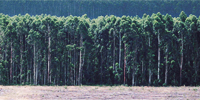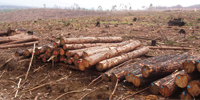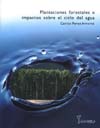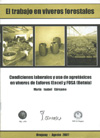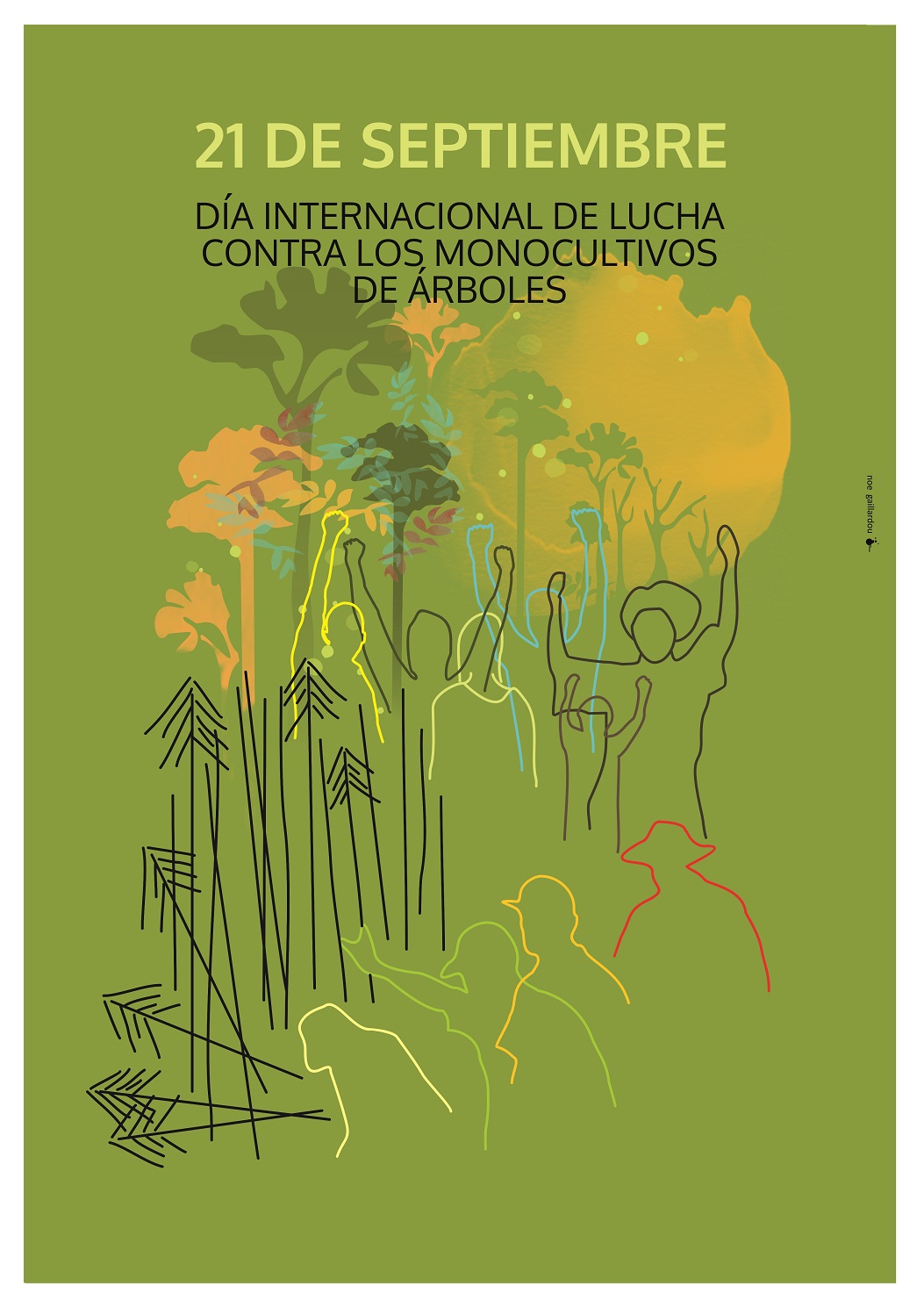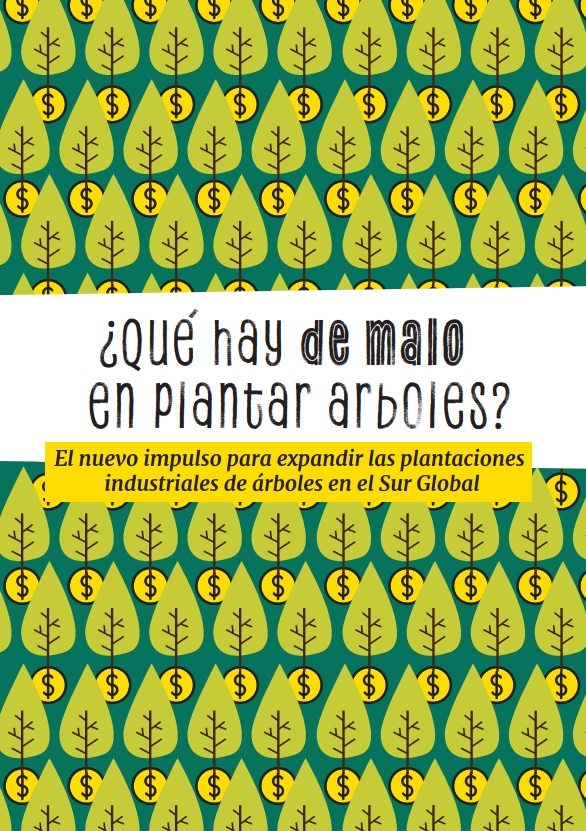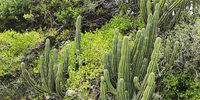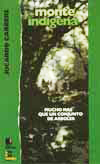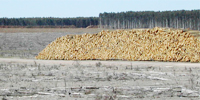by Raquel Núñez and Elizabeth Díaz
“We lost the sunrise.” This is not a figurative turn of phrase, but a literal statement of fact, shared with us by the local residents of an area of the department of Paysandú invaded by plantations owned by Botnia.
The Uruguayan countryside has agricultural zones and more populated areas in the south, but for the most part it comprises green and gently rolling grasslands grazed by cows and sheep. Here and there, a small island of trees rises up, providing them with shade and shelter. Rivers and streams crisscross the landscape, with densely tangled indigenous forests growing along their banks. This grassland ecosystem served as the foundation upon which Uruguay forged its identity and built its food security.
Although cows and sheep are non-native species – cows were introduced in the 17th century by the Spanish conquistadors, and sheep were introduced in the 19th century – both animals have been fully assimilated into the Uruguayan territory, and the extensive cattle raising system implemented since that time has been maintained, although with some changes.
From an environmental perspective the system has proven sustainable, allowing for centuries the development of fertile grasslands that have interacted with native fauna and flora and provided hydrological and climate services. A whole way of life and culture was born in this system: the deep-rooted traditions of country folk and “gauchos”; the transformation of work chores like cattle-branding and sheep-shearing into social events; the country school as an important centre of social integration; the ranch house as the heart of each large landholding, featured rural livelihood and culture.
At the same time, extensive cattle raising has been utterly unjust from a social point of view, giving rise to the establishment of large private landholdings or latifundia. Indeed, the claim for land reform has been part of long-standing popular demand.
The introduction of monoculture tree plantations has not only brought no improvement but has worsened the situation in both social and environmental terms. Large private landholdings have changed hands –mainly to foreign corporations- and have become much larger. From a social perspective, tree plantations have created even less employment than the one provided by previous land uses and resulted in increased rural-urban migration. Plantation work has been outsourced, making unionisation very difficult. The lack of strong trade unions result in poor working conditions (low pay, temporary jobs, lack of security). From an environmental perspective, plantations have proven to be unsustainable, including depletion of water resources, habitat destruction for local flora and fauna and irreversible damages to soils.
Now the non-native species are trees, primarily eucalyptus, brought by another kind of global conquistadors. They have not come to peacefully reside on our land, but rather to invade on a massive scale; they are selfish and demanding. Not only have they further reinforced the system of large private landholdings but exacerbated the depopulation of rural areas, and instead of helping to remedy unemployment and poverty, they have often made them worse.
One of the main companies in the tree plantation sector is Forestal Oriental S.A. (FOSA), owned by Botnia. Its monoculture eucalyptus plantations are located along Uruguay’s western border, in the departments (provinces) of Paysandú, Río Negro and Soriano, among others, and they supply wood for the Botnia pulp mill.
A visit to the area gave us a first-hand look at the realities faced by the people who live there. Luis Alberto and Ana María own a small piece of land in the country. A wire fence separates their property from the Botnia plantation located next to it. From the door of their house, they look out on the wall of tree trunks that now blocks out the sky, and comment, “We lost the sunrise.” They have simply had to “adapt” to the situation and make do with watching the sun set in the west, which is still open to them – at least for now.
The distant landscape stretching off into the horizon as far as the eye can see, with almost no obstacles in the way, is an image burned into the psyches and memories of people who live in the Uruguayan countryside. Today, the countless shades of green and ochre of the fields, the diversity reflected in grasslands punctuated with relicts of indigenous woodlands, gallery forests along the banks of rivers and streams and small clusters of trees planted to provide shelter for the cattle, have all been blocked out by the vast, monolithic tree plantations. Local residents have lost geographical and historical landmarks, like the San Francisco stream at the 38-kilometre mark on Route 90 in Paysandú. Ana María walked past it every day on her way to school as a little girl, but now it has disappeared, swallowed up by the enormous thirst of monoculture eucalyptus plantations.
“There used to be ponds three or four metres deep and they’ve all dried up. It all started years ago with the plantations, it’s not because of the drought happening now. The land doesn’t produce the same as it used to,” says Oscar. Aside from the ponds, streams and creeks, the plantations’ thirst has also sucked up the water from many nearby wells. In this part of Paysandú, wells that tapped into the shallowest layers of groundwater – between three and fourteen metres underground – have dried up. In order to have a household supply of water, local residents must now drill down 40 to 60 metres to reach reservoirs protected from the plantations by a layer of rock. The extremely high cost involved must be paid by the residents themselves, and very few of them can afford it.
For people who love the land, leaving it behind is painful. But this is what many farmers have been forced to do, after being “fenced in” by huge tracts of trees. In the case of Juan, aside from ending up surrounded by plantations, he was also besieged by the invasions of wild boars that they provoke. “When there are plantations, the boars start moving,” the local residents told us. “Juan had no choice but to move, And besides, he was running out of water,” they added. Now Juan, a typical “country farmer” type with weather-beaten skin, sells cosmetics in the city.
The expansion of tree plantations has not helped to curb the depopulation of rural areas: it has actually increased it. Country schools are closing down, because there are no children left in them. Colonia Roncán, a settlement of around 20 families that was founded around a large cattle farm, disappeared when the land was bought by a plantation company. “Ranch dismantlers” take care of erasing all traces of the former establishments, and the plantations finish off the task.
Cattle farmers who do not own their own land are hard pressed by the exorbitant rise in property costs, driven up by the demand for plantation land. The shortage of pasture land has made it extremely expensive to lease land for grazing, and they have been forced to take their cattle wherever they can, moving from one spot to another, sometimes long distances away or near railway tracks, which increases the risk of accidents.
Being surrounded by tree plantations poses another enormous risk for local residents: fire. “A fire in that thick mass of trees could burn your face from 500 metres away,” we were told. Even worse, in the areas with the greatest concentration of tree plantations, the main escape routes themselves are surrounded by trees. There would be no way out.
Tree plantations came to Uruguay with promises of jobs and profits. But it is a business that only benefits big operations, says Ana María. Small plantation owners cannot weather the ups and downs of the market. At the beginning of the plantation “boom”, she told us, “a neighbour planted trees because of the promises of prosperity. He invested USD 800 a hectare to set up a plantation and he ended up selling out at USD 1,000 a hectare including the land and everything, because wood prices fell and it wasn’t profitable anymore.”
According to the figures of the last official agricultural statistics (2000), the number of permanent workers per forested 1,000 hectares is 4.49, the worst performance comparing to 5.84 for cattle raising, 9.18 for sheep raising, 7.75 for rice growing, 20 for vineyards, 133 for horticulture, and 262 for self consumption.
It would appear that, ultimately, two big companies will end up owning almost all of the plantations in the region: “The few small Uruguayan plantation companies that used to give jobs to local people are all gone now,” says Luis Alberto. All the plantations are gradually ending up in the hands of either Botnia or Eufores (a subsidiary of the Spanish pulp giant ENCE), which generally outsource the hiring of workers.
Employment is a major issue. Labourers who work on cattle ranches earn very poor salaries, without a doubt. An individual labourer working on a tree plantation earns more, but this does not necessarily entail an improvement in the quality of life of the labourer’s household. Plantation workers also have to cover more expenditures, and they lose out on the subsistence economy activities made possible by living on the land. With no other options open to them, they must adapt to the urban and itinerant nature of plantation work. In most cases the workers are hired by subcontractors, which means they are almost no protected, are employed only seasonally, and have little possibility of organizing trade unions to defend their rights. For the most part, they “live in town and work on the plantations”: work teams move from town to town, transported in trucks or buses, depending on the job assigned to them by the subcontractor. For the towns in question, they are seen as invasions of strangers, outsiders who have no intent to stay and settle down, and who frequently provoke a feeling of insecurity.
This situation implies a rupture of the rural social fabric, with families uprooted from their homes and cut off from their former social ties. The knowledge and traditions passed down through the generations in the countryside are gradually being lost.
Tree plantations have other impacts that indirectly affect farmers by affecting their livestock. One example is the increase in myiasis or “fly strike”, a disease in which blowfly larvae burrow into the animal’s skin, causing open sores and infections. This is a common problem in the countryside, but according to the area’s residents, it has become worse as a result of the microclimate created by the plantations, which according to them is more propitious to the proliferation of the flies in the summer and allows them to survive throughout the winter, when they used to be “cleaned out”. One of the local residents reported that he used to use an average of two bottles a year of the medicine used to treat the disease, but now, with the advent of the plantations, he goes through 15 bottles, even though he has half the number of livestock.
Another disturbance caused by tree monocultures is the fact that the fog often formed on some sections of the highway now takes much longer to dissipate because of the tunnel effect created by the presence of plantations on both sides of the road, a situation that increases the risk of accidents. Something similar occurs with frost, which takes longer to thaw due to the shade created by the plantations, ultimately damaging the grasslands.
There is a wealth of wood in the plantations that have invaded the department of Paysandú, yet local sawmills are constantly short of it. The wooden posts used to build fences are now more expensive because they need to be brought in from farther away. The industries that account for the greatest value added to wood no longer have access to it, since it is all used for the production of pulp.
High walls of eucalyptus trees block out the sky on both sides of the highway in Paysandú on Routes 26, 90 and 25, in the towns of Paso de la Cruz, Paso de los Mellizos, Pandule, Pueblo Seco, Piedras Coloradas, Algorta, Orgoroso, Quebracho, and Cerro Chato, and in Río Negro on Route 24, outside Tres Bocas. Their establishment has meant not only the destruction of Uruguayan grasslands, but sometimes native forests as well, a fact that local residents report with great regret.
Monoculture tree plantations are an industry that has been imposed on the countryside, in an aggressive and disproportionate way. Their only purpose is to feed a ravenously wasteful paper market. They are in no way sustainable, and promote neither prosperity nor social justice.
The Forestry Law of 1987 promotes large-scale monoculture tree plantations to give Uruguay access to the world market as a supplier of raw material for pulp and paper production. As in the case of other countries of the South, this process has been supported by a wide array of international mechanisms (JICA, FAO, the World Bank, bilateral investment agreements).
In 2003, the Finnish company Botnia arrived with an offer to invest a billion dollars in the construction of a pulp mill – on the basis of a bilateral agreement – which carried considerable weight in Uruguay, impoverished by an economic crisis and devalued currency.
The policies that have promoted industrial tree plantations have concentrated their expansion basically in 4 areas –North, Center, East and West of the country- where the massive walls of uniform trees have a heavy impact on lands that had remained quite free from disturbing intervention –mostly dedicated to extensive cattle raising- but now are being battered with agrotoxics –particularly herbicides- that are widely used in large-scale tree monocultures.
Plantations continued to spread, and in an effort to obtain the public’s approval, they were presented as forests.
But the truth of the matter is that large-scale tree monocultures are a model that can never be sustainable. They are intrinsically lacking in biodiversity, they harm the soil and water, and they are only a profitable business for big companies.
And, above all, they are not forests.

